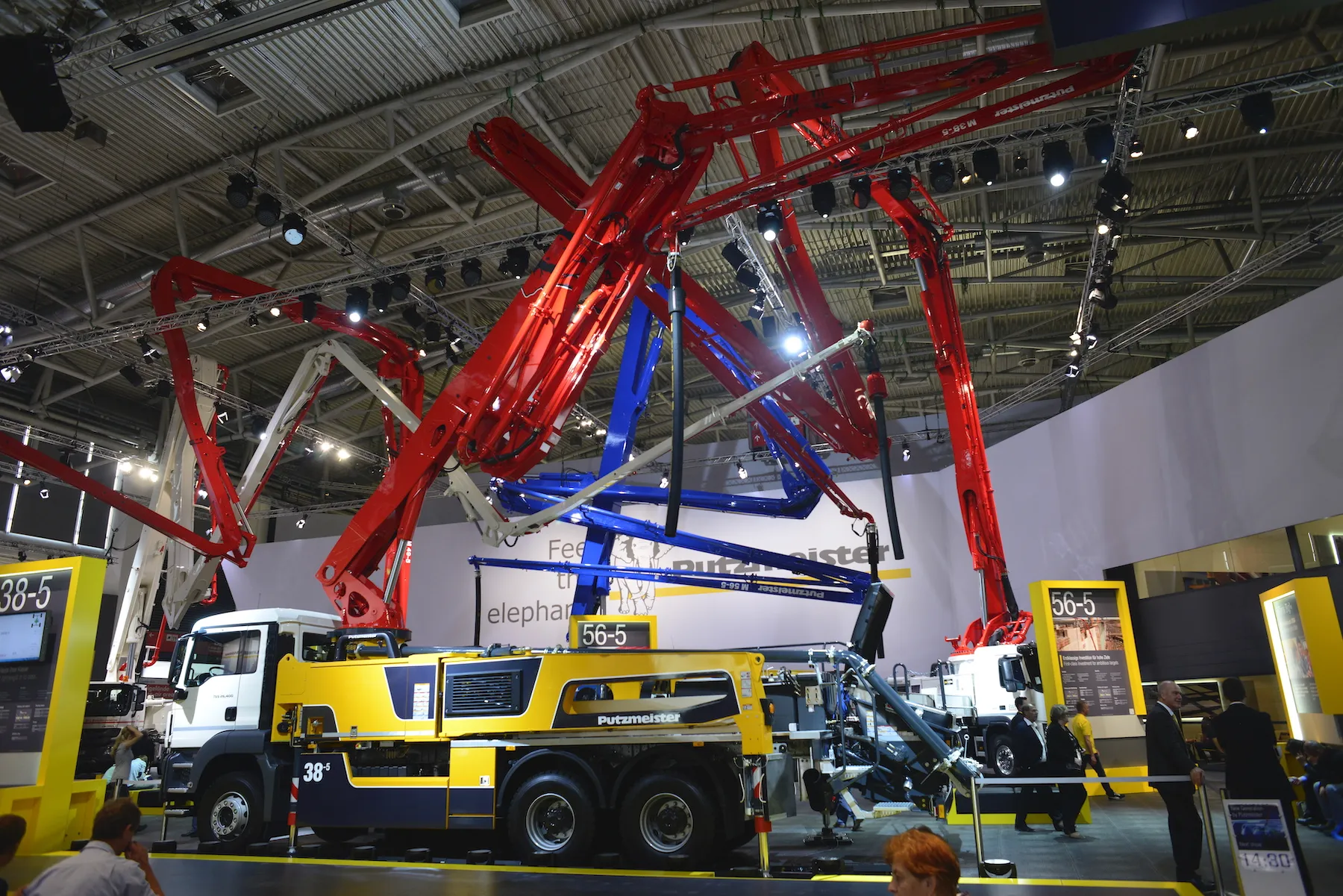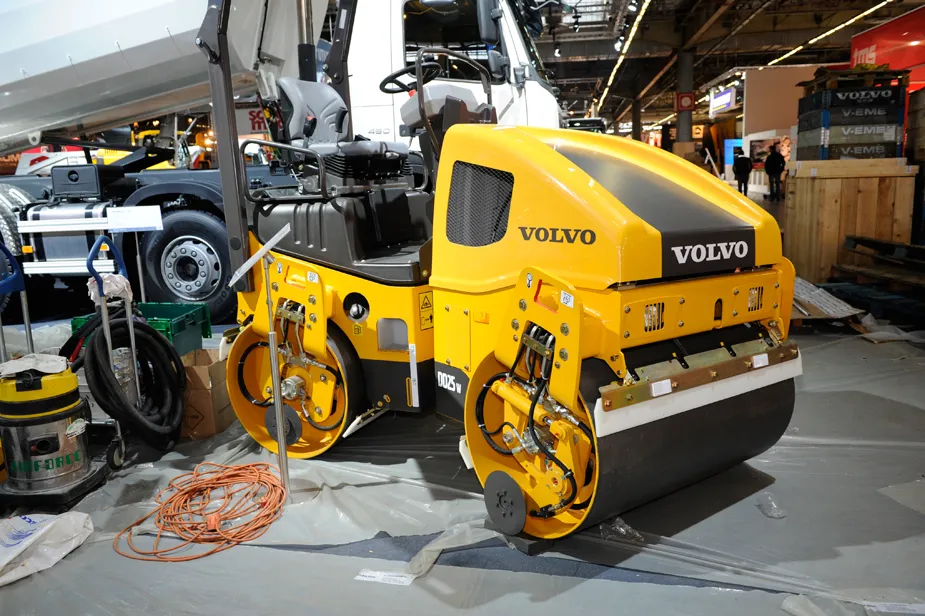Markuu Teräsvasara, president Atlas Copco surface drilling, was among those providing a glimpse of the future of drilling. He said that three futuristic drill rig models on show at INTERMAT, codenamed ROC Xone, ROC Xtwo and ROC Xthree, were examples of how the company’s designers are developing new systems. It is claimed they will offer extreme silencing and independently operated booms; separate wheel positioning systems for difficult terrain while flattening for loading and transport, and also fit into a
April 21, 2012
Read time: 3 mins
Markuu Teräsvasara, president 161 Atlas Copco surface drilling, was among those providing a glimpse of the future of drilling.
He said that three futuristic drill rig models on show at INTERMAT, codenamed ROC Xone, ROC Xtwo and ROC Xthree, were examples of how the company’s designers are developing new systems.
It is claimed they will offer extreme silencing and independently operated booms; separate wheel positioning systems for difficult terrain while flattening for loading and transport, and also fit into a standard 14ft container.
“Drilling is the first thing in the drill/blast process. First you get the drilling right and then the blasting. This will give better fragmentation of the rock in a quarry and that allows better crushing and screening,” said Teräsvasara, whose division also includes mobile crushing and screening and the Powercrusher range.
Introducing the company’s new SmartROC T35/T40 drill rig, which was nominated for an INTERMAT Innovation Award, he said that with a completely new hydraulic system it was possible to reduce fuel consumption by up to 50%.
“In surface drilling we have two divisions: one that produce drills for 1-8inch holes often used in construction, quarries and mining, and another in the United States that produces drills for up to 16-18inch holes for big open cast mines, although there is some overlap,” said Teräsvasara.
“In applications the drilling part of the process is seldom over 10% of the cost of a tonne but it is essential it is right.
“We have had for some time a drill system, the Hole Navigation System (HNS), that allows us to use GPS so we can see where the drill holes go and do the best drilling. If this is done correctly savings of up to 30% in explosives can be made.”
He said that the development of drilling is done in small steps but in the last ten years huge strides have been made in efficiency, fuel efficiency and sustainability.
“The requirements for productivity will always be there with operators expecting more for lower costs. This has to be done in a sustainable way,” he added.
Looking ahead he said that the industry is likely to make more use of automated machines with remote controls, and this is driven by safety issues, productivity and a lack of people within the industry.
“Mining has difficulties regarding people and one way to solve this is to increase automation. There is already automation underground and the same technology can be used on the surface. So it can be used for quarries.
“In the future there will be one operator sitting remotely using two or three machines and this is not so far ahead,” he concluded.
2 Internal 2 4824 0 oLinkInternal <span class="oLinkInternal"><span class="oLinkInternal">View more videos</span></span> Video false /event-news/intermat-2012/video/ true false %>
He said that three futuristic drill rig models on show at INTERMAT, codenamed ROC Xone, ROC Xtwo and ROC Xthree, were examples of how the company’s designers are developing new systems.
It is claimed they will offer extreme silencing and independently operated booms; separate wheel positioning systems for difficult terrain while flattening for loading and transport, and also fit into a standard 14ft container.
“Drilling is the first thing in the drill/blast process. First you get the drilling right and then the blasting. This will give better fragmentation of the rock in a quarry and that allows better crushing and screening,” said Teräsvasara, whose division also includes mobile crushing and screening and the Powercrusher range.
Introducing the company’s new SmartROC T35/T40 drill rig, which was nominated for an INTERMAT Innovation Award, he said that with a completely new hydraulic system it was possible to reduce fuel consumption by up to 50%.
“In surface drilling we have two divisions: one that produce drills for 1-8inch holes often used in construction, quarries and mining, and another in the United States that produces drills for up to 16-18inch holes for big open cast mines, although there is some overlap,” said Teräsvasara.
“In applications the drilling part of the process is seldom over 10% of the cost of a tonne but it is essential it is right.
“We have had for some time a drill system, the Hole Navigation System (HNS), that allows us to use GPS so we can see where the drill holes go and do the best drilling. If this is done correctly savings of up to 30% in explosives can be made.”
He said that the development of drilling is done in small steps but in the last ten years huge strides have been made in efficiency, fuel efficiency and sustainability.
“The requirements for productivity will always be there with operators expecting more for lower costs. This has to be done in a sustainable way,” he added.
Looking ahead he said that the industry is likely to make more use of automated machines with remote controls, and this is driven by safety issues, productivity and a lack of people within the industry.
“Mining has difficulties regarding people and one way to solve this is to increase automation. There is already automation underground and the same technology can be used on the surface. So it can be used for quarries.
“In the future there will be one operator sitting remotely using two or three machines and this is not so far ahead,” he concluded.
%$Linker:








